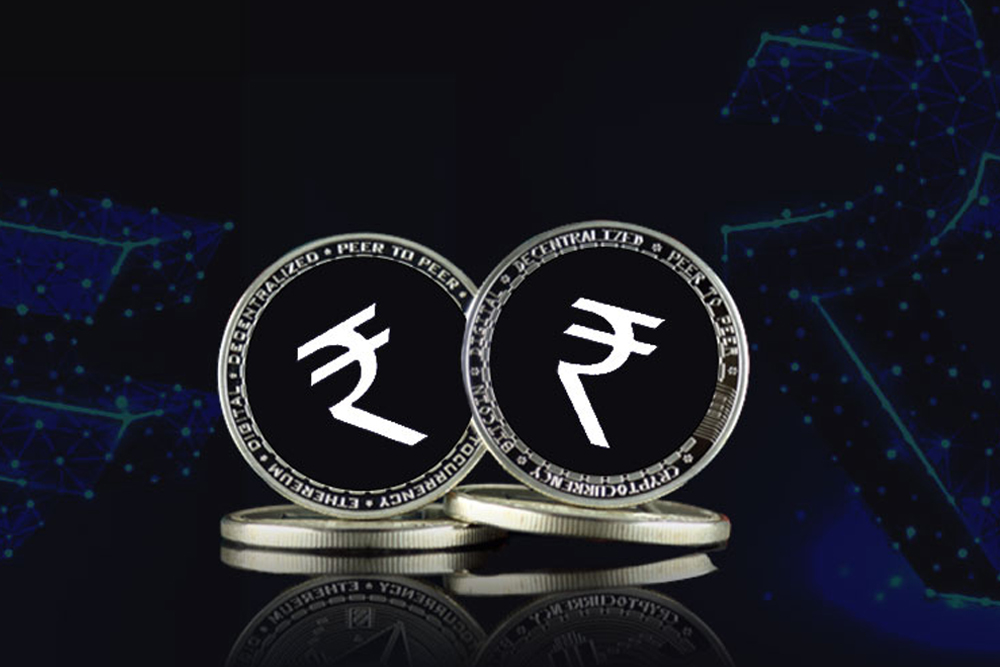What is Digital Rupee, when will it come and how’s it different from private cryptocurrencies
Digital currency will be backed by RBI which will never be default. Money will be of RBI but the nature will be digital. Digital rupee issued by RBI will be a legal tender. Rest all aren’t legal tender, will not, will never become legal tender: Finance Secy TV Somanathan
A CBDC is not a crypto currency. It is the digital form of legal tender and private virtual currencies are entirely different. Private virtual currencies are at substantial odds with the historical concept of money.
Union Finance Minister Nirmala Sitharaman on February 1 said the Reserve Bank of India (RBI) will launch a central bank digital currency (CBDC) in 2022-23, marking the first official statement from the Union government on the launch of the much-awaited digital currency.
The FM said introduction of CBDC will boost the digital economy and it will be based on the blockchain technology. The Reserve Bank of India (RBI) had earlier indicated that CBDC is on the cards even as the central bank is against the idea of permitting private virtual currencies.
The FM said introduction of CBDC will further enhance India’s status as a digital economy given its world-class digital payments system.
What is a CBDC?
A central bank digital currency is the legal tender issued in digital form. It is the same as a fiat currency but the form is different and is exchangeable one-to-one with government-issued money. In other words, CBDC is the same as the legal currency we use. Just that it’s in a digital form.
How does Digital Rupee work?
A CBDC is the digital form of fiat currency and will ease transactions. An RBI report had earlier described CBDC as something that will provide a safe, robust, and convenient alternative to physical cash. Depending on various design choices, it can also assume the complex form of a financial instrument, the RBI report said.
Is CBDC a cryptocurrency like Bitcoin?
No. A CBDC is not a private crypto currency. It is a digital form of legal tender and private virtual currencies are entirely different. Private virtual currencies are at substantial odds with the historical concept of money. They are not commodities or claims on commodities as they have no intrinsic value.
How does RBI respond to claims that private cryptos are assets like gold?
The RBI had said that private virtual currencies do not represent any person’s debt or liabilities. “There is no issuer. They are not money (certainly not currency) as the word has come to be understood historically,” said RBI Deputy Governor T Rabi Sankar on July 22 . What this effectively means is that, according to the RBI, no banking entity can treat private virtual currencies as assets or liabilities for transactions.
What is RBI’s view on CBDC?
Sankar said the introduction of CBDC has the potential to provide significant benefits, such as reduced dependency on cash, higher seigniorage due to lower transaction costs and reduced settlement risk.It will also possibly lead to a more robust, efficient, trusted, regulated and legal tender-based payments option, Sankar said.
What is RBI’s take on CBDC vis-a-vis private cryptocurrencies?
Sankar said the advent of private virtual currencies may well be another reason why CBDCs may be necessary. “It is not clear what specific need is met by these private virtual currencies that official money cannot meet as efficiently, but that may in itself not come in the way of their adoption. If these virtual currencies gain recognition, national currencies with limited convertibility are likely to come under threat,” Sankar said.
What are the risks associated with CBDCs, according to RBI?
Sankar outlined certain risks associated with CBDCs, saying the availability of these currencies will make it easy for depositors to withdraw balances if there is stress on any bank. “Flight of deposits can be much faster compared to cash withdrawal,” Sankar said.On the other hand, just the availability of CBDCs might reduce panic “runs” since depositors have knowledge that they can withdraw quickly. One consequence could be that banks would be motivated to hold a larger level of liquidity, which could result in lower returns for commercial banks, the deputy governor said.
When is RBI planning to introduce CBDC?
The FM has announced Digital Rupee launch in the Budget speech. After Cabinet approval, the government will ask the central bank to start work on the launch. In fact, the RBI has already begun the ground work. The Digital Rupee is expected to hit the ground sometime this year going by the comments of the government and RBI.
What is the future of private virtual currencies in India?
There is no clarity yet on this. The government is working on a bill to regulate cryptocurrencies but this bill is not listed for the ongoing Budget session. Until the government comes clear on regulation, the central bank is likely to remain in a wait-and-watch mode as far as private virtual currencies are concerned.
The government announced a 30% crypto tax. What does it mean?
The government announced taxing private digital assets at 30 per cent which is widely seen as indirect recognition to the existence of these instruments. But, it doesn’t mean that these assets are legally recognised in the true sense. There is a debate on this point. At the same time, CBDC may happen sooner, going by the indications available so far.











